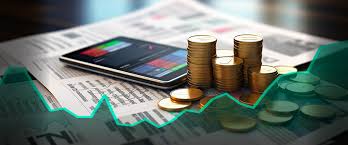CFD trading is an innovative and popular investment option for traders around the world. But what exactly is CFD Trading, and how does it work? This comprehensive guide will help both novice and experienced investors understand the ins and outs of cfd trading, including its benefits, risks, and best practices.
CFD stands for Contract for Difference, which is a financial contract between a buyer and a seller. It allows traders to speculate on the price movements of various financial assets without owning the underlying assets. CFDs are highly leveraged, which means traders can enter positions worth much more than their initial investment amount. For example, if you have a 10:1 leverage, you can theoretically control $10,000 worth of assets with just $1,000 in your trading account. This amplifies your potential profits, but also your potential losses.
CFDs are commonly used for trading various asset classes, including stocks, indices, commodities, currencies, and cryptocurrencies. With CFDs, traders can buy or sell contracts that represent the price movements of these assets over time. If you “go long,” you buy a CFD at the current market price, anticipating that the price will rise in the future. Conversely, if you “go short,” you sell a CFD at the current market price, anticipating that the price will fall in the future.
One of the major advantages of CFD trading is its flexibility. Traders can open and close positions at any time during market hours, unlike traditional stock trading that operates during fixed hours. Additionally, CFD brokers offer a wide range of trading platforms and tools that provide real-time data, charting, and analysis to help traders make informed decisions. These platforms are accessible from anywhere, whether you’re trading from home or on the go.
However, as with any form of trading, CFD trading also comes with risks. Due to its high leverage, traders must be careful not to overexpose their positions and incur large losses. Managing risk is essential in CFD trading, and this includes setting stop-loss limits and taking profits at the right time. As the CFD market is unregulated in many countries, traders must also choose a reliable and reputable broker with a proven track record of customer satisfaction and integrity.
Conclusion:
CFD trading is a dynamic and rewarding investment option for those who are willing to learn about its complexities and risks. The potential for profits is high, but so is the potential for losses. As with any form of trading, it’s important to do your research, choose a reliable broker, and manage your risks effectively. By doing so, you can take advantage of the flexibility and convenience of CFD trading to make informed decisions and achieve your financial goals.
